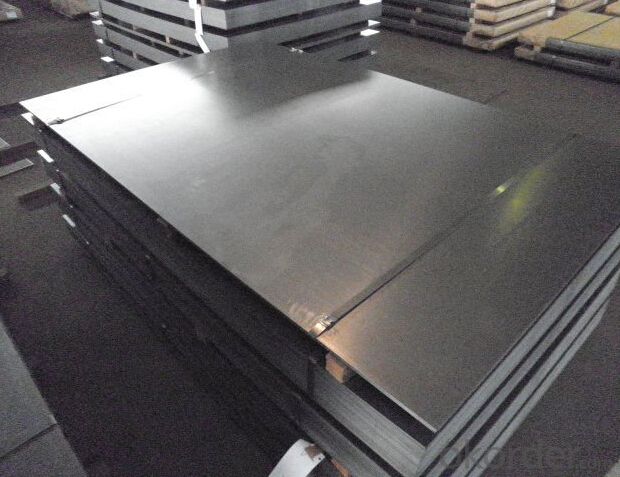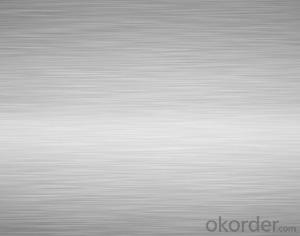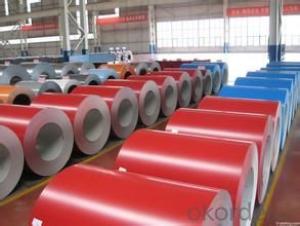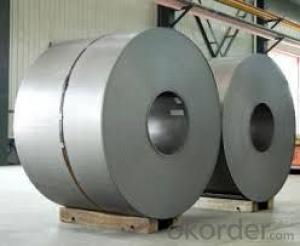Steel Plate Lowest Price for Astm A36 carbon
- Loading Port:
- Tianjin
- Payment Terms:
- TT OR LC
- Min Order Qty:
- 50 m.t.
- Supply Capability:
- 50000 m.t./month
OKorder Service Pledge
OKorder Financial Service
You Might Also Like
Item specifice
1.Description of steel plate:
Our products into high-strength low-alloy steel plate, carbon structural steel plate, alloy structural steel plate, boiler and pressure vessel steel plate, bridge steel plate, structural steel plate, shipbuilding steel plate and marine oil platform steel plate, pipe steel plate, high strength and high toughness steel plate, mold plate, corrosion-resistant plate, Wear-resistand steel plate, composite plate with 12 major series.
2.Size range: Steel Plate width 300-5000mm, thickness 5-600mm, length 1000-18000mm.
Usage: (1).used for metallurgical, mechanical, electrical construction field
(2).used for ships, military (armored) Construction
(3).used for outside engineering, machine tool base, automobile rear of products
3.Standard: According to user requirements, can be delivered the following criteria: National standards, the metallurgical industry, the American ASTM, ASME standards, Japanese JIS, German DIN, British BS, European EN, the international ISO standards and the standards specific board.
4.Inspection Standard: In accordance with China (JB4730, GB/T2970), United States (A435, A577, A588), Japan (JISG0801, JISG0901), Germany (SEL072), British (BS5996), France (NFS04-305) and other domestic and international testing standard production test.
5.Data of steel sheet:
Chemical Requirements
| N | C | H | Fe | O | Al | V | Pa | Mo | Ni | Ti | |
Gr1 | 0.03 | 0.08 | 0.015 | 0.20 | 0.18 | / | / | / | / | / | bal |
| Gr2 | 0.03 | 0.08 | 0.015 | 0.30 | 0.25 | / | / | / | / | / | bal |
| Gr3 | 0.05 | 0.08 | 0.015 | 0.30 | 0.35 | / | / | / | / | / | bal |
| Gr4 | 0.05 | 0.08 | 0.015 | 0.50 | 0.40 | / | / | / | / | / | bal |
| Gr5 | 0.05 | 0.08 | 0.015 | 0.40 | 0.20 | 5.5-6.75 | 3.5-4.5 | / | / | / | bal |
| Gr7 | 0.03 | 0.08 | 0.015 | 0.30 | 0.25 | / | / | 0.12-0.25 | / | / | bal |
| Gr9 | 0.03 | 0.08 | 0.015 | 0.25 | 0.15 | 2.5-3.5 | 2.0-3.0 | / | / | / | bal |
| Gr12 | 0.03 | 0.08 | 0.015 | 0.30 | 0.25 | / | / | / | 0.2-4.0 | 0.6-0.9 | bal |
6.Image of steel sheet:

7.FAQ
We have organized several common questions for our clients,may help you sincerely:
①How about your Warranty?
Warranty: 1-Year for the whole light. Warranty is based on correct storage, installation, using and maintenanc
②How to guarantee the quality of the products?
We have established the international advanced quality management system,every link from raw material to final product we have strict quality test;We resolutely put an end to unqualified products flowing into the market. At the same time, we will provide necessary follow-up service assurance.
③How long can we receive the product after purchase?
In the purchase of product within three working days, We will arrange the factory delivery as soon as possible. The pecific time of receiving is related to the state and position of customers.Commonly 7 to 10 working days can be served.
- Q:Are steel sheets suitable for pharmaceutical or cleanroom applications?
- Yes, steel sheets are suitable for pharmaceutical or cleanroom applications because they are durable, easy to clean, and resistant to contamination, making them ideal for maintaining a hygienic environment.
- Q:Can steel sheets be used for HVAC equipment?
- Yes, steel sheets can be used for HVAC equipment. Steel sheets are commonly used in the construction of HVAC components such as ductwork, air handling units, and heat exchangers, due to their durability, strength, and ability to withstand high temperatures.
- Q:What are the common thicknesses for hot-rolled steel sheets?
- The common thicknesses for hot-rolled steel sheets range from 1.5mm to 20mm, with popular options including 3mm, 6mm, 8mm, and 10mm.
- Q:Can steel sheets be used in corrosive environments?
- Yes, steel sheets can be used in corrosive environments, but the type of steel used and the proper protective measures need to be taken into consideration. Stainless steel, for example, is highly resistant to corrosion and can withstand harsh environments. It contains chromium, which forms a protective oxide layer on the surface, preventing corrosion. Galvanized steel is another option, where a layer of zinc is applied to the steel surface, providing a protective barrier against corrosion. Additionally, various coatings such as epoxy, polyurethane, or paint can be applied to steel sheets to enhance their resistance to corrosive elements. It is important to select the appropriate steel grade and protective coatings based on the specific corrosive environment to ensure long-lasting performance. Regular inspections and maintenance are also necessary to identify and address any potential signs of corrosion.
- Q:Are steel sheets resistant to UV rays?
- No, steel sheets are not inherently resistant to UV rays. Steel can be vulnerable to UV damage, which can cause it to fade, discolor, or even corrode over time. However, the extent of the damage will depend on various factors such as the type of steel, the thickness of the sheet, the specific UV exposure, and the presence of protective coatings. To enhance the UV resistance of steel sheets, manufacturers often apply coatings such as paint, powder coatings, or galvanized finishes that can provide some level of protection against UV rays. It is important to consult with steel suppliers or manufacturers to determine the specific UV resistance capabilities of the steel sheets being used and to consider additional protective measures if necessary.
- Q:Are steel sheets magnetic?
- Yes, steel sheets are magnetic because they are primarily made of iron, which is a ferromagnetic material.
- Q:Can steel sheets be used for electrical transformers?
- Yes, steel sheets can be used for electrical transformers, particularly in the core construction. The high magnetic permeability of steel allows for efficient transfer of electrical energy and reduces energy losses. Steel sheets are often laminated to minimize eddy currents and improve transformer performance.
- Q:What is the typical lifespan of painted steel sheets?
- The typical lifespan of painted steel sheets can vary depending on several factors such as the quality of the paint used, the environmental conditions they are exposed to, and the maintenance and care given to the sheets. Generally, painted steel sheets can last anywhere from 20 to 40 years. However, if the paint is of high quality and the sheets are properly maintained, their lifespan can be extended even further. Regular cleaning, inspection for any signs of damage or corrosion, and appropriate touch-ups or repainting can help prolong the lifespan of painted steel sheets. Additionally, factors such as exposure to harsh weather conditions, chemicals, or corrosive environments can also impact the longevity of painted steel sheets. It is worth considering these factors and conducting regular maintenance to ensure the extended lifespan of painted steel sheets.
- Q:What are the different sheet metal forming techniques for steel sheets?
- Steel sheets can be shaped into desired forms and structures using various techniques for sheet metal forming. Below are some common techniques used for steel sheets: 1. Bending: To create angles, curves, or complex shapes, the sheet is bent either manually or with the help of machines like press brakes. 2. Stretch forming: This technique involves stretching and forming the sheet over a mold or die, especially for large and curved components. 3. Deep drawing: By using a punch and a die, the sheet metal is formed into desired shapes, often used for cylindrical or box-like structures such as cans, pots, or automotive components. 4. Roll forming: The sheet metal is passed through a series of rollers to gradually shape it into the desired form. This technique is commonly used for producing long and continuous shapes like rails, tubes, or channels. 5. Spinning: A spinning tool is used to rotate the sheet metal against a mandrel, shaping it into cylindrical or conical shapes such as lampshades or cookware. 6. Embossing: This technique involves stamping a pattern or design onto the sheet metal to create a raised or recessed surface. It is commonly used for decorative purposes or to enhance the structural integrity of the sheet. 7. Hydroforming: Hydraulic pressure is utilized to shape the sheet metal into complex forms, often employed in the creation of automotive components like car body panels or exhaust systems. These examples illustrate the wide range of sheet metal forming techniques available for steel sheets. The choice of technique depends on the desired shape, complexity, and specific requirements of the application.
- Q:Can steel sheets be used for electrical switchgear?
- Yes, steel sheets can be used for electrical switchgear. Steel is a common material choice for switchgear enclosures due to its durability, strength, and ability to provide protection from environmental factors such as moisture, dust, and temperature fluctuations. Steel sheets are commonly used in the construction of switchgear cabinets and enclosures to provide a robust and secure housing for electrical components. The steel sheets used for switchgear are typically coated or painted to provide additional protection against corrosion. Additionally, steel is a good conductor of heat, which helps dissipate any heat generated by the electrical components within the switchgear. Overall, steel sheets are a suitable material for electrical switchgear enclosures due to their mechanical properties, protective capabilities, and thermal conductivity.
1. Manufacturer Overview |
|
|---|---|
| Location | |
| Year Established | |
| Annual Output Value | |
| Main Markets | |
| Company Certifications | |
2. Manufacturer Certificates |
|
|---|---|
| a) Certification Name | |
| Range | |
| Reference | |
| Validity Period | |
3. Manufacturer Capability |
|
|---|---|
| a)Trade Capacity | |
| Nearest Port | |
| Export Percentage | |
| No.of Employees in Trade Department | |
| Language Spoken: | |
| b)Factory Information | |
| Factory Size: | |
| No. of Production Lines | |
| Contract Manufacturing | |
| Product Price Range | |
Send your message to us
Steel Plate Lowest Price for Astm A36 carbon
- Loading Port:
- Tianjin
- Payment Terms:
- TT OR LC
- Min Order Qty:
- 50 m.t.
- Supply Capability:
- 50000 m.t./month
OKorder Service Pledge
OKorder Financial Service
Similar products
New products
Hot products
Hot Searches
Related keywords




























